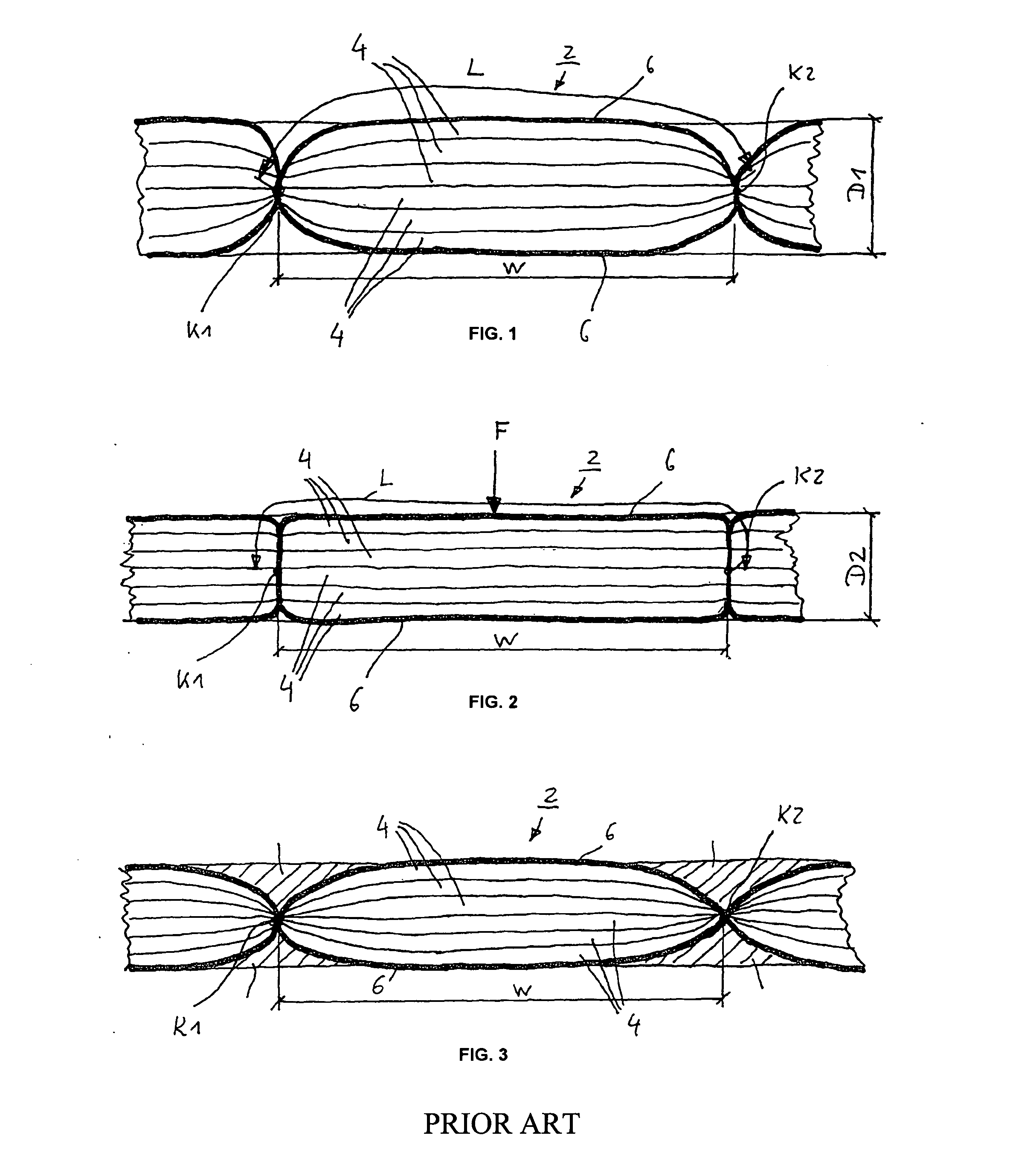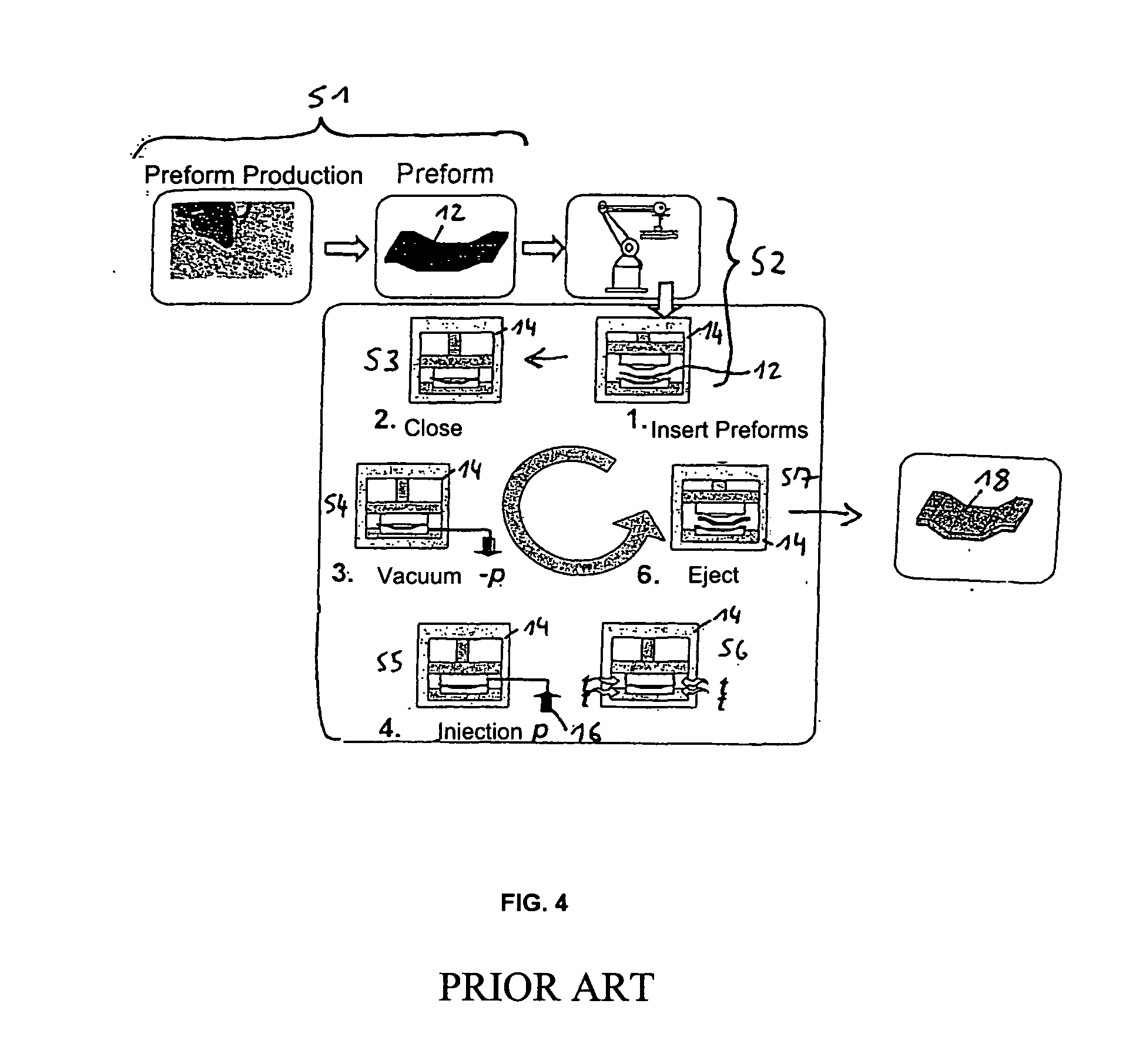Method for the production of a fibre composite material component and intermediate product for such a method
a composite material and intermediate product technology, applied in the direction of sustainable transportation, transportation and packaging, chemistry apparatus and processes, etc., can solve the problems of unfavorable fiber pattern or even destruction of fibers, disturbing and reducing the strength of fiber composite materials. , the effect of natural relaxation
- Summary
- Abstract
- Description
- Claims
- Application Information
AI Technical Summary
Benefits of technology
Problems solved by technology
Method used
Image
Examples
Embodiment Construction
[0035]FIG. 1 shows a schematic cross section of an intermediate product according to the invention in a first stage of the method according to the invention. FIG. 2 shows a schematic cross section through the intermediate product according to the invention as shown in FIG. 1 in a second stage of the method according to the invention. As can be seen in these drawings, the intermediate product according to the invention comprises at least one reinforcing-fiber preform 2 that has several reinforcing-fiber layers 4 that lie on top of one another and that are sewed or joined together by means of a seam 6, in other words, by a sewed thread (here: top and bottom threads). As a result of the sewing, the reinforcing-fiber preform 2 is pre-compacted to a reinforcing-material thickness or to a pre-compacting size D1 at which the seam 6 is under a prescribed thread tension (see FIG. 1). Starting with this pre-compacting size D1 and with the prescribed thread tension, the reinforcing-fiber prefo...
PUM
| Property | Measurement | Unit |
|---|---|---|
| tension | aaaaa | aaaaa |
| size | aaaaa | aaaaa |
| compacting size | aaaaa | aaaaa |
Abstract
Description
Claims
Application Information
 Login to View More
Login to View More - R&D
- Intellectual Property
- Life Sciences
- Materials
- Tech Scout
- Unparalleled Data Quality
- Higher Quality Content
- 60% Fewer Hallucinations
Browse by: Latest US Patents, China's latest patents, Technical Efficacy Thesaurus, Application Domain, Technology Topic, Popular Technical Reports.
© 2025 PatSnap. All rights reserved.Legal|Privacy policy|Modern Slavery Act Transparency Statement|Sitemap|About US| Contact US: help@patsnap.com



